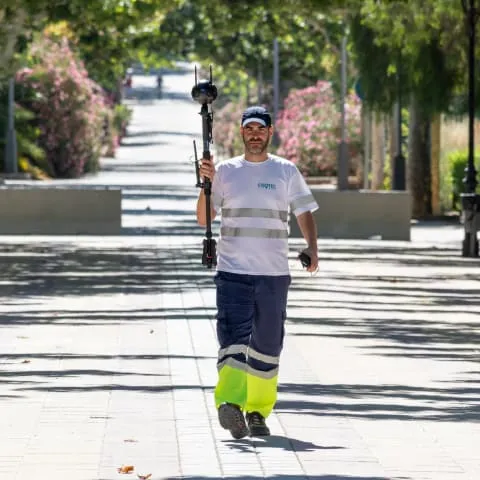
How can digital twins improve municipal services?
Digital twins have emerged as a powerful tool to streamline operations and increase efficiency in the public and private sectors. From optimising urban services to helping cities become smart, digital twins are revolutionising the way we interact with our built environment. In this blog we will explain the different applications of digital twins in municipal services, the advantages of using them and their relationship with other technologies such as building information modelling (BIM). Let’s get started!
How are digital twins used in cities?
Cities are increasingly turning to digital twins to optimise their operations and ensure the highest levels of efficiency. Digital twins can be used in a variety of urban services, from traffic management and public safety to energy and water management.
By simulating the behaviour of urban systems in real time, digital twins enable informed decision-making and can help identify potential issues before they become a problem. For example, a digital twin of a city’s traffic system can help detect potential traffic jams before they occur, allowing city officials to take preventative action – interesting, isn’t it?
Digital twins in urban services
The use of digital twins in urban services is becoming increasingly common. Digital twins can be used to simulate the behaviour of urban systems such as energy, green spaces or waste collection, enabling informed decision-making and rapid response to any problems.
For example, digital twins can be used to simulate the behaviour of a city’s water system and detect potential leaks or inefficiencies. This can help city officials take quick action to resolve any problems before they become problems.
Digital twins can also be used to optimise urban services such as public transport. By simulating the behaviour of the transport system, digital twins help city officials to detect potential problems and take preventive measures.
Advantages of digital twins in a municipal environment
The use of digital twins in a municipal environment offers several advantages. First, they can be used to simulate the behaviour of urban systems in real time, allowing for informed decision-making and rapid response to any problems.
Secondly, they help to optimise the performance of urban systems by identifying potential inefficiencies and taking preventive measures. This can help reduce costs and improve citizens’ quality of life.
Third, they encourage cities to become smarter by harnessing the power of technology. By simulating the behaviour of urban systems, digital twins can help city managers make informed decisions and ensure the highest levels of efficiency. Are the benefits of smart cities important or not?
Digital twin technology and building information modelling (BIM) in Fisotec projects
Digital twin technology is closely related to building information modelling (BIM). BIM is a process of creating and maintaining a digital representation of a building. It is this methodology (Building Information Modelling) that enables the development of a digital twin, creating and managing the information of the built asset, which is allowing the benefits of BIM and digital twins to be extended to entire cities.What is Fisotec‘s role in developing such revolutionary and effective technologies? One example, within our Smart Inventory format, is the awarding of the BIM modelling of a total of 13 provincial buildings to the General Treasury of the Social Security in Almeria. For this, we are using Leica’s BLK2GO equipment, which is allowing us to verify the state of the buildings, from the point of view of surface evaluation, as well as to lay the foundations for the planning of constructive actions in these buildings. All of this, in an agile, fast and precise manner.
